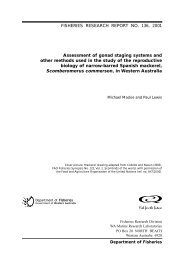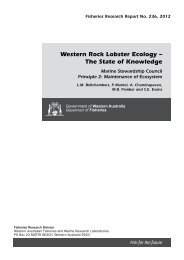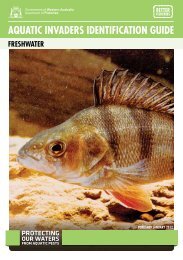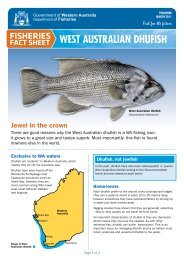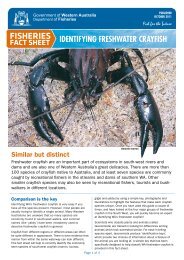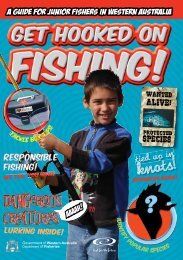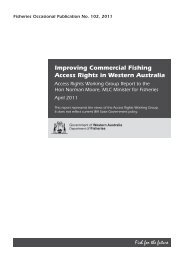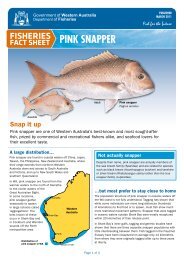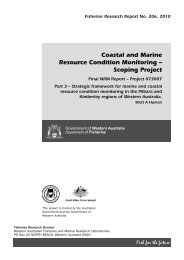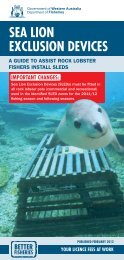Beachcombers Field Guide - Department Of Fisheries Western ...
Beachcombers Field Guide - Department Of Fisheries Western ...
Beachcombers Field Guide - Department Of Fisheries Western ...
Create successful ePaper yourself
Turn your PDF publications into a flip-book with our unique Google optimized e-Paper software.
West Australian seahorse<br />
(Hippocampus subelongatus)<br />
Chordata – Osteichthyes<br />
Seahorses have bony<br />
plates protecting their bodies<br />
instead of scales. Their long snouts<br />
end in tiny, toothless mouths that suck in<br />
minute crustaceans, which are swallowed<br />
whole. The West Australian seahorse<br />
varies in colour but can be distinguished<br />
by a series of brown lines across the<br />
snout. Growing to about 22 cm in length,<br />
they are found in sheltered<br />
reefs, sponge<br />
gardens and<br />
seagrass<br />
beds in a<br />
limited<br />
area of<br />
the south<br />
west of<br />
<strong>Western</strong><br />
Australia.<br />
Photo: Sandy Clarke<br />
Did you know?<br />
Most species of seahorse live<br />
in pairs. Female seahorses pass<br />
their eggs to the males, who<br />
incubate them in a protective<br />
pouch. He later ‘gives birth’ to<br />
highly developed offspring.



